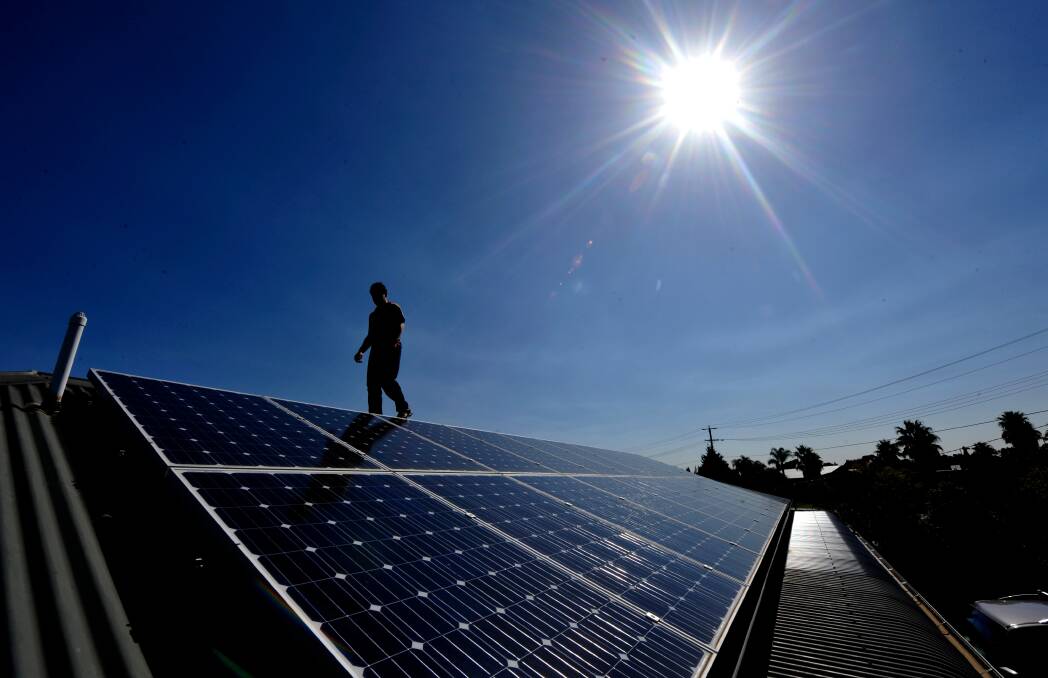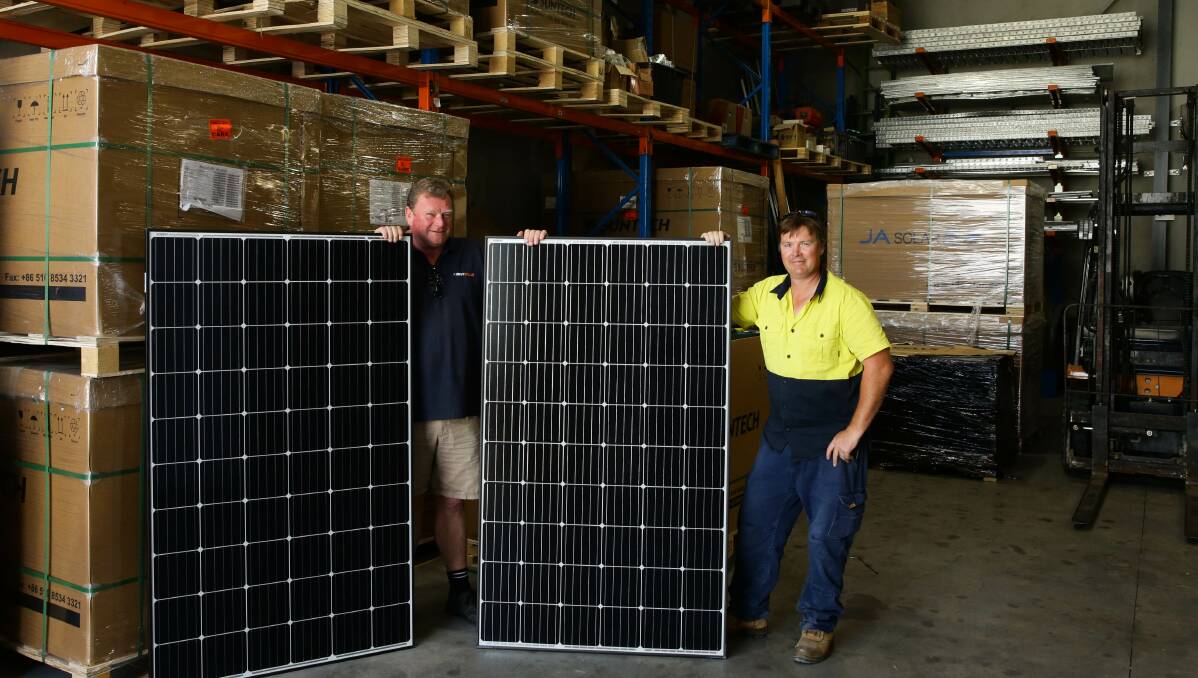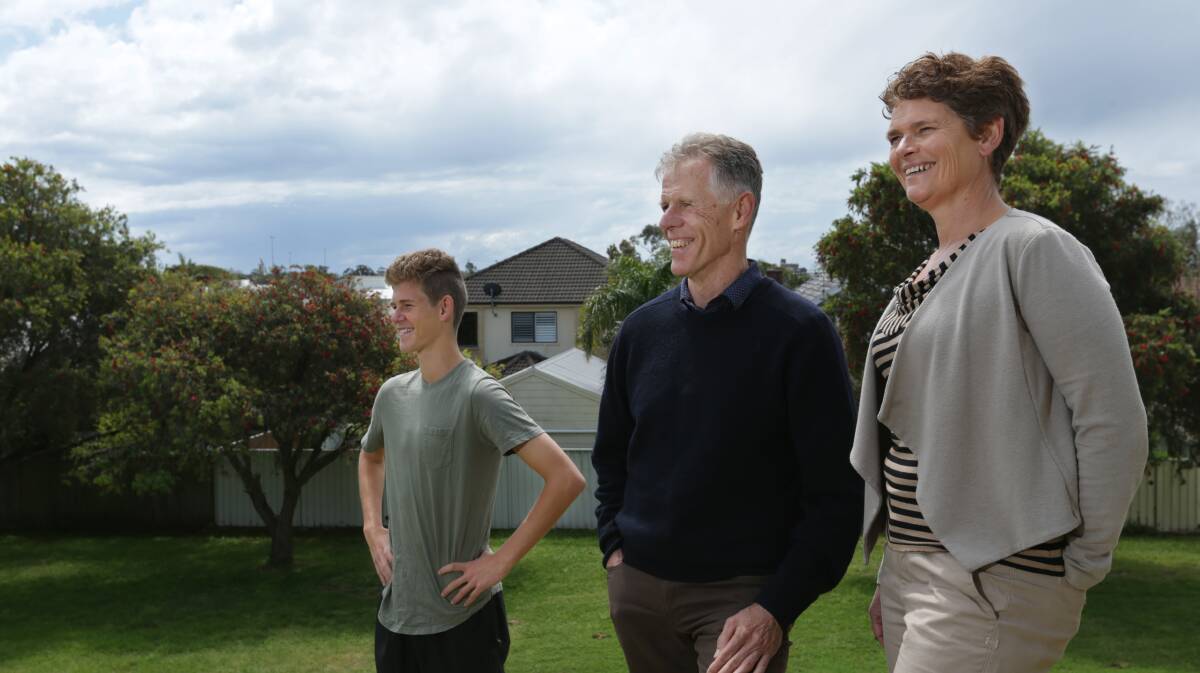
The number of Hunter homes using solar energy has more than doubled in the past decade with about one in five homes across the region making the switch to renewable energy.
Subscribe now for unlimited access.
or signup to continue reading
Australian Photovoltaic Institute data shows there are more than 45,000 domestic roof-top solar installations, representing 21 per cent of homes, across the Hunter Region. The systems have a combined capacity of 225 megawatts.
Gloucester (26.1 per cent) , Dungog (23.3 per cent) and Port Stephens (21.8 per cent) have the highest proportion rooftop solar installations.
But the areas that are producing the most energy from rooftop solar are Lake Macquarie, Gloucester and Maitland.
"We have gone from four to 21 installers in three years," Newy Solar director Joe Tynan said.
"The attitude towards renewables is really positive. People are becoming more educated about the benefits of renewable energy. Some of them are getting encouraged by the their kids and others have just realised how much money they can save."

Among those who are making the switch is the Naylor family from Hamilton South.
Rick Naylor said the investment in a five kilowatt system, which he and his wife Kerith had been considering for about 10 years, was motivated more by environmental sustainability principles than the savings they would make.
"It will save us money in the long term but our main goal is to leave as small a footprint as possible on the planet," he said.
[Rooftop solar] will save us money in the long term but our main goal is to leave as small a footprint as possible on the planet."
- Rick Naylor
"We try and walk the talk; we walk where possible and grow vegetables; getting solar is an extension of that philosophy."
The region's Local government sector is also doing heavy lifting with dozens of small and medium renewable energy projects either producing power or under construction.
They have a combined output of 12.5 megawatts.
They range in scale from the City of Newcastle 5 megawatt solar farm that is under construction at the Summerhill Waste Management Centre through to a five kilowatt solar system on the Bolton Point Community Hall.
Lake Macquarie Council, an early adopter of renewable energy in the region, has 1.2 megawatts of capacity across 24 sites in the local government area.
"Approximately 20 per cent of council's electricity consumption, excluding street lighting, is supplied by renewable energy that is helping us avoid an estimated 1600 tonnes of greenhouse emissions per year," a spokesman said.
Charlestown-based community service provider Allambi Care will next week launch its community-funded 60 kilowatt solar array, financed by the local community through the member-owned Pingala Co-operative.
The initiative, launched two months ago, is the first partnership between Lake Macquarie City Council and a local organisation to adopt the innovative approach to renewable energy.
Community members invested between $250-$1000 in the project, with the money going towards supplying and installing the solar technology at Allambi Care's Charlestown headquarters, which supports 2000 people across the region.
"We want more renewable energy in Lake Macquarie. We've got greenhouse gas emission targets and we need to get more solar panels on commercial and residential properties," Lake Macquarie mayor Kay Fraser said on Friday.
"This initiative drives towards that goal, and it does so in a way that not only benefits the environment, but also the local economy."
Port Stephens Council recently installed a 99.96 kilowatt solar system on the roof of its Raymond Terrace headquarters.
"Our administration building will use approximately 85 per cent of the solar power generated, while the remaining 15 per cent will be put back into the grid on weekends and public holidays when energy use is low," general manager Wayne Wallis said.
"Port Stephens Council has taken advantage of federal government rebates to deliver this project, and it's estimated that we will achieve a return on investment in about four years."
Hunter Water produces 380 kilowatts of renewable energy through a combination of solar, hydro and cogeneration technologies at Newcastle, Dungog, Chichester Dam and Cessnock.
"Hunter Water plans to invest more than $13 million over the next five years on renewable energy generation via onsite solar at a number of our treatment plants and pumping sites to reduce our electricity consumption, operational costs and greenhouse gas emissions," a spokeswoman said.

"We are also exploring the opportunity to generate renewable energy from biosolids at our wastewater treatment plants. A centralised biosolids treatment facility with energy recovery would generate enough renewable energy to power approximately 465 homes. A business case for the project is being developed."
Australian Bureau of Statistics data shows the number of full-time equivalent jobs in the industry nationally rose 28 per cent (3,890 jobs) in 2017-18 from a year earlier.
The figure represents the highest level of full-time equivalent employment in renewable energy activities since 2011-12.
Large scale solar projects - systems with an installed capacity of 100 kilowatts or greater - have been driving most of the growth, but rooftop solar photovoltaics continue to make up about half of the total number of jobs in the sector.
The rooftop solar photovoltaics sector employed 7857 people in March. Most of the jobs were in Victoria (2134) while NSW and Queensland had 2000 each.
Green Energy Markets consultancy data shows Australian Rooftops added almost 500 megawatts of new solar photovoltaic capacity in the March quarter of 2019. The figure represents 45 per cent more capacity in systems of 100 kilowatts or smaller compared with the March 2018 quarter.
The consultancy expects solar photovoltaic capacity of rooftop systems will top 2000 megawatts this year, or about a quarter more than the previous record annual total achieved in 2018.
The installation of small-scale solar projects totalled more than 23,000 in June, with the average size of residential units now 6.5 kilowatts.
If the rate of rooftop solar installations continues until 2022, the forecast extra generation of more than 10,000 gigawatt hours will top the annual electricity generated by AGL's Liddell coal-fired power station, which is due to close in 2022.
Australia now has the highest uptake of solar of any country in the world, with about 2.15 million rooftop systems installed nationwide.
But there are fears Australia's ageing electricity grid could be overwhelmed by the output from solar panels.
Australian Energy Market Commission warned in September that the grid had reached a ''tipping point'' and would be unable to cope with the forecast penetration of renewables.
Commission chairman John Pierce said the regulator "won't stand by and allow the current situation to continue" as energy networks are forced to cut off solar photovoltaic flows from the grid because of the power system's inability to connect to new technologies.
"There are serious choices to be made. To keep building traditional infrastructure and passing on those costs to consumers or get on with the job of implementing reforms to increase access to the network for new solar connections," Mr Pierce said told the Sydney Morning Herald.


